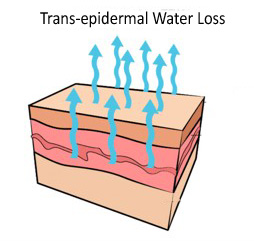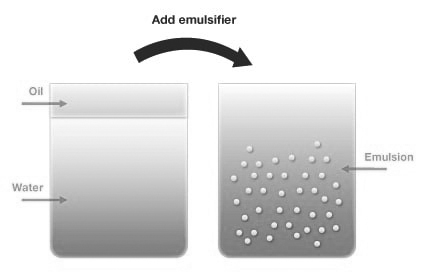We are more educated than ever on what we put in our bodies, where products come from and are they sustainably sourced.

When it comes to make up and skin care products there is much discussion. Was it tested on animals, can some of the ingredients can cause cancer?
Cosmetic chemists are always looking for interesting and exotic ingredients to improve the skin’s appearance and health – but at what cost?
Cleopatra’s secrets
Skin care and make up formulations date to around 3000 BC in Ancient Egypt. It’s documented that Cleopatra bathed in donkeys’ milk to keep her skin smooth and supple. One of the naturally-occurring materials used in ancient Egypt was iron oxide, and eye paints have also been found at ancient burial sites and consisted primarily of a green ore called malachite.
 Nowadays, most of the creams and lotions on the market are emulsions which means – two unmixable fluids in which one liquid is dispersed as fine droplets in the other. A great example of this is Homogenised Milk. Fat or (Lipids) are dispersed in water as fine droplets by this process. The reason the fat does not float to the top immediately is due to the presence of emulsifiers. The other concern cosmetic companies face is how the product will react to oxygen.
Nowadays, most of the creams and lotions on the market are emulsions which means – two unmixable fluids in which one liquid is dispersed as fine droplets in the other. A great example of this is Homogenised Milk. Fat or (Lipids) are dispersed in water as fine droplets by this process. The reason the fat does not float to the top immediately is due to the presence of emulsifiers. The other concern cosmetic companies face is how the product will react to oxygen.
Flavour Of The Moment
Major cosmetic companies are now moving away from animal fat based products like Tallow, and moving towards renewable vegetable based products like coconut oil and Palm Kernal oil due to environmental and sustainability concerns. (Though Palm Oil plantations are an environmental worry.)
Emulsifiers
Oil and water are not compatible and will not combine on their own. In cosmetics, emulsifiers are a key component in many cosmetic or lotion. Since most of the scenting of products is achieved with essential oils, it poses a problem when the product created is water-based – the oil will coat the skin but the water- based nutrients won’t penetrate the skin. This is the reason why unscented products are so popular in the market as the nourishing ingredients are easily absorbed into the skin.
There will always be a separation between water and oil until you add an emulsifier to the product. This is the perfect way of bringing oil and water together. When an emulsifier is added to a recipe, they position themselves by reducing the surface tension between the oil and water and therefore creating one complete mixture.
Parabens
In cosmetics these days, the nasty ingredients are usually the preservatives that are designed to extend the life of the product. Any natural cosmetic will deteriorate without the addition of a preservative. Parabens are a group of highly controversial preservatives derived from plants that have allegedly caused health concerns. The study of Parabens is not conclusive. Some studies suggest they benefit the skin by limiting the growth of fungi, mold and harmful pathogens. While others suggest that in 100% concentrations fed orally to rats, there is the potential to cause complications. This practice is both cruel and serves no benefit as the concentrations in skin care are usually less then 1% and it is applied topically to the skin. The is no research that identifies Parabens having any more impact on our bodies than our own hormones. It is also true that Parabens are used in preserving some foods and are regarded as “safe to consume”.
My advice is use skin care as directed and find an alternative product that does not contain Parabens. They are good when used as a preservative, however the complete implications of using Parabens might not yet be fully understood.
For those who read the ingredients on products, here’s a breakdown:
Humectants
In simple terms a humectant is a substance that attracts water. These ingredients are prized in skin care as they help limit Trans-epidermal water loss which is where water is lost through the surface of the skin leading to dehydration. These ingredients are where most cosmetic companies focus their marketing campaign. The most popular being Hyaluronic. Humectants can be both natural and synthetic.
Natural Humectants
Aloe – Derived from the aloe vera plant; it penetrates skin deeply and quickly, hydrating at the surface and at the lower epidermis
Honey – Has a natural ability to hold onto water, hydrating without creating an oily feel.
Hyaluronic acid – A natural molecule present throughout the body that helps hydrate and cushion joints, eyeballs and skin. This is an important ingredient in many anti-ageing products which helps the skin look firmer and tighter as well as reducing the appearance of fine lines and wrinkles
Glycerin – Occurs naturally in every living cell so it’s easily absorbed by the skin. As well as providing deep hydration, the texture of glycerin makes it perfect for skin care because it glides on smoothly and evenly
Synthetic Humectants
Propylene glycol – by-product of petroleum refining
Polyethylene glycols (PEGs) – petroleum-based compounds that soften skin.
Silicones – man-made chemicals that form a film over the skin’s surface.
Urea – most often used as a preservative; also considered a humectant.
Occlusive Agents
Occlusive agents increase moisture levels in skin by providing a physical barrier to Tewl.
Ingredients with occlusive properties include; petrolatum, waxes, oils and silicones. Some occlusive agents, like petrolatum, can leave a heavy feeling on skin; which are often combined with other ingredients to improve consumer appeal. They are a good choice when barrier function is compromised; for example, burns patients will need to use occlusive dressings in order to maintain and heal their barrier.
Antioxidants – work to block reactions from free radical damage. Free radicals are a primary cause of degenerative diseases caused by damaging a cell’s DNA which mutates to cause a variety of diseases including cancer and arthritis. They are added to skin care as a preservative to prevent oxidation of products. More than one antioxidant is needed because there is more than one type of free radical causing harm. Each antioxidant has a different role to play when it comes to fighting free radicals.
Antioxidants – Vitamin C (otherwise known in skincare as L-ascorbic acid or magnesium ascorbyl phosphate.)
Vitamin E (known as tocopherol or tocopherol acetate.)
Lichochalcone or steryl glycyrrhetinate extracts from licorice.
Green tea and white tea extract.
Jason 02 6515 0567
Cherrys at Tinonee.

